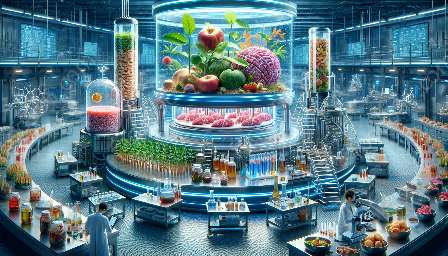The dairy industry relies on sophisticated separation techniques to process milk and its by-products efficiently and maintain product quality. These techniques are vital to various stages of bioprocessing and food biotechnology in the dairy sector, contributing to the production of high-quality dairy products.
Overview of Dairy Industry Separation Techniques
Dairy processing involves the separation of milk components, such as fat, proteins, and minerals, to create a range of products including milk, cheese, yogurt, and butter. This is achieved through various separation and purification techniques that are integral to bioprocessing and food biotechnology in the dairy industry.
Relevance to Bioprocessing Techniques
In bioprocessing, separation techniques play a crucial role in separating and purifying biomolecules, such as proteins and enzymes, from the dairy raw materials. These biomolecules are essential for various biotechnological applications, including the production of pharmaceuticals, nutraceuticals, and bio-based materials.
Relevance to Food Biotechnology
Food biotechnology encompasses the use of biological processes and organisms to improve the quality, nutritional value, and safety of food. Within the dairy industry, separation techniques are fundamental to food biotechnology, enabling the isolation and purification of bioactive compounds, enzymes, and probiotics for the development of functional dairy products.
Methods and Technologies Used in Dairy Industry Separation Techniques
The dairy industry employs a variety of separation techniques to achieve the desired composition and functionality of dairy products. These techniques include:
- Centrifugation: Centrifugation is used to separate milk into cream and skim milk, and to further fractionate milk components based on their density differences.
- Microfiltration and Ultrafiltration: These membrane-based techniques are utilized to separate and concentrate proteins, remove bacteria, and produce milk fractions with specific properties.
- Separation by Heat Treatment: Heat treatments, such as pasteurization and sterilization, play a vital role in separating and inactivating microorganisms to ensure the safety and stability of dairy products.
- Electrophoresis: This technique is employed for the separation of proteins and other charged molecules based on their migration in an electric field, allowing for the analysis and isolation of specific dairy components.
- Chromatography: Various chromatographic methods, such as gel filtration and ion exchange chromatography, are used for the purification and isolation of biomolecules, flavors, and functional dairy ingredients.
Integration with Bioprocessing
When considering the interaction with bioprocessing techniques, these separation methods are essential for the downstream processing of dairy-derived biomolecules. They facilitate the purification and concentration of bioactive compounds, enzymes, and other valuable components that are produced through biotechnological processes in the dairy industry.
Integration with Food Biotechnology
In the context of food biotechnology, the technologies used in dairy industry separation processes are crucial for isolating and refining bioactive compounds, probiotics, and other functional ingredients that are used to enhance the nutritional and health-promoting properties of dairy products.
Overall, separation techniques in the dairy industry are indispensable for achieving the desired composition, functionality, and safety of dairy products, while also playing a pivotal role in supporting the bioprocessing and food biotechnology aspects of the dairy sector.

